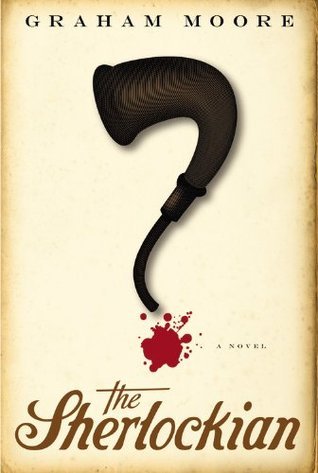Ever since Sherlock Holmes was borne out of the imagination of his creator, Arthur Conan Doyle, in 1887, the brilliant London-based “consulting detective” has never gone out of style. Holmes with his acute reasoning may even be more popular now thanks to the Baker Street Irregulars members, the expanded Sherlock Holmes Museum in London and even the 21st re-imagining of Sherlock Holmes that recently aired on PBS.
But Doyle grew sick of his hero, who had become more popular — and to some more real — than the author himself. When Doyle tried to “kill” Holmes by pitching him over Reichenbach Falls in Switzerland in 1893, England literally went into mourning and Doyle was vilified as if he were Moriarty himself.
The fascination with Sherlock Holmes today and during the time that Doyle was writing those stories makes for the subject of a clever debut for Graham Moore, a 28-year-old expert in religious history. Switching between two centuries, “The Sherlockian” works as an insightful look at the rise of celebrities, extreme fans and a character who continues to be bigger than life as well as a testament to the power of storytelling.
In 1893, Doyle longed to be remembered for writing “real literature,” not the “few morbid yarns” about Holmes. Forget that Holmes had brought Doyle more fame and fortune than he could ever have achieved with his other work. He’s tired of receiving letters addressed to Holmes, of strangers seeking the great detective’s help, or being asked to sign books as Holmes, rather than with his own name. But he’s equally unprepared for the outcry when he supposedly kills his character — the obituaries that treat Holmes as a real person; the throng of people wearing black armbands and the strangers who accost the author, demanding to know why he “murdered” Holmes.
In 2010, introverted Harold White has just been admitted into the prestigious Baker Street Irregulars during their annual New York banquet. The highlight of the dinner is to be the unveiling of Doyle’s lost diary — until the scholar who supposedly has the book is murdered.
The game’s afoot, as the greatest detective would say, and the shadow of “what would Sherlock Holmes do” hangs heavily over both Doyle and White. To prove that he is the better man, Doyle sets out to solve a series of murders of young women. His Watson is his good friend Bram Stoker, a theater manager who worries that his little novel about Dracula will never catch on. White is hired by Doyle’s great-grandson to solve the scholar’s murder and retrieve the diary. White’s sidekick is more of an Irene Adler — a female journalist with a few secrets.
Moore deftly alternates “The Sherlockian” between his two heroes who are working in two time periods on two continents. Yet both men rely on Holmes’ style of crime solving. Moore smoothly delivers an evocative view of late 19th century London as well as its 21st century version. The endearingly nerdy White is perfectly balanced by the arrogant and often priggish Doyle.
Doyle would be proud of Moore’s ingenious “The Sherlockian.” So would Holmes. As will any fan of the Holmes canon.
Send questions/comments to the editors.



Success. Please wait for the page to reload. If the page does not reload within 5 seconds, please refresh the page.
Enter your email and password to access comments.
Hi, to comment on stories you must . This profile is in addition to your subscription and website login.
Already have a commenting profile? .
Invalid username/password.
Please check your email to confirm and complete your registration.
Only subscribers are eligible to post comments. Please subscribe or login first for digital access. Here’s why.
Use the form below to reset your password. When you've submitted your account email, we will send an email with a reset code.